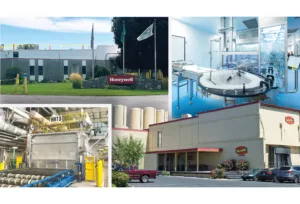Acme Concrete submits low bid on runway rehab
$20.3 million project will help airport meet standards
Acme Concrete Paving Inc., of Spokane, is the apparent low bidder for a $20.3 million project to reconstruct part of Runway 21 at the Spokane International Airport so it meets current international visibility standards.
The project involves raising the southwest end of the runway by six feet at the highest point and tapering it down gradually over about 3,000 linear feet to eliminate line-of-sight obstructions, says SIA spokesman Todd Woodard.
Runway 21 currently doesn't conform to line-of-sight standards dictated by the International Civil Aviation Organization, which states that pilots must be able see at least halfway down the runway from any point on it, he says.
Woodard says the corresponding taxiways that connect to Runway 21 will also have to be raised to meet the new height.
Funding from the Federal Aviation Administration's Airport Improvement Program will pay for the entire project. SIA was approved to receive funding for the project in 2008 as part of its five-year capital improvement plan, Woodard says.
Besides raising the actual runway gradient by six feet, about 85,000 square yards of new asphalt runway and taxiway pavement will also be laid as part of the project, he says. Other work is to include reinstalling airfield lighting, markers, and signage that will need to be moved to meet the new height of the runway.
The project is expected to take about six months to complete, Woodard says. The start date will depend on when the federal dollars are received, but the airport hopes to begin work in April, he says.
Woodard says airport officials realized that the end of Runway 21 didn't conform to current line-of-sight standards during the planning phase of a Runway 3 extension project. That extension work was completed last November.
"We wanted to do it at the end of the Runway 3 extension and expansion, but decided to do it in another phase after that" so there would be additional runway space available for planes to land and take off while the work was being done on Runway 21.
Woodard says Runway 21 is in operable condition, and the work is being done so it conforms to the current standards, which are required by the FAA for any project that receives federal funding.
"The FAA knows of the urgency of the project," he says. "It's the third highest priority project in the western U.S. (Funding) is tied up right now, but we're pretty hopeful we'll get it soon."
Acme Concrete came in about 23 percent below the project engineer's original estimate of $26.4 million, Woodard says.
Acme Concrete also was involved in preliminary work to prepare for the line-of-sight project, which began late last summer and included relocating a service road, a storage facility for plane de-icer tanks, and a building that houses controls for the airfield's electrical and lighting systems.
Related Articles

_c.webp?t=1763626051)
_web.webp?t=1764835652)

